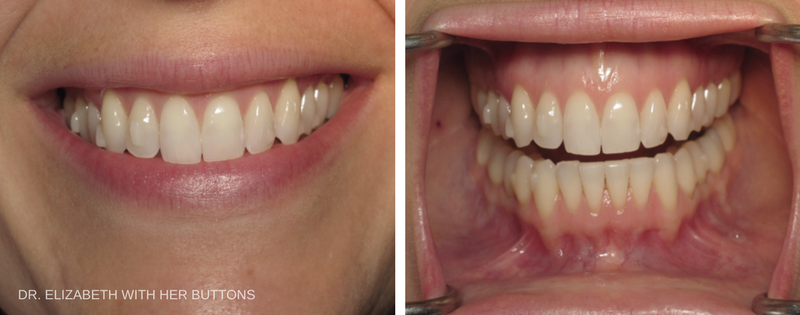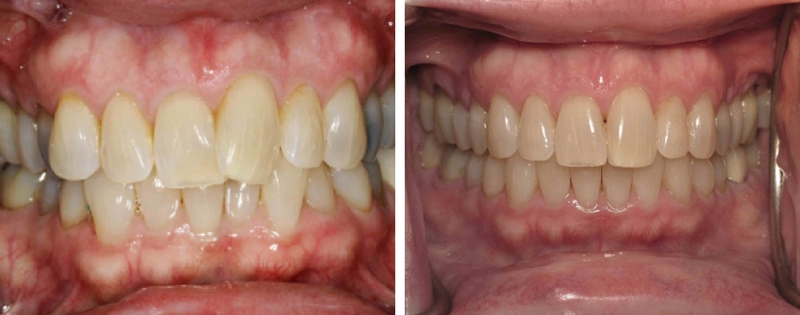By: Dr. Elizabeth Eggert
Only a lucky few are born with straight, perfectly aligned teeth. The rest of us have to see Dr. Elizabeth or Dr. Jeff, for help restoring teeth to a healthy alignment.
Esthetic concerns often bring patients into Eggert Family Dentistry to talk about tooth alignment. However, even beyond esthetics, it’s important to know how critical good alignment is to overall dental health.
Dental alignment procedures like Invisalign may improve your smile from a visual perspective, but they also correct issues that may lead to serious dental health problems.
What issues can be improved by Invisalign and corrected with dental alignment?
Discourage Tooth Decay
When teeth are misaligned, they do a much better job of harboring bacteria, which leads to plaque buildup and tooth decay. This is because overcrowded or crooked teeth leave inaccessible nooks and crannies where bacteria thrive. When it’s challenging to access all the exposed tooth enamel with a toothbrush or floss, the area is much more prone to tooth decay.
Improve Periodontal Health
Periodontal health refers to the conditions of the periodontium, or gum tissues. Periodontal disease is disease of the gums. Crowded and overlapping teeth permit plaque and tartar to build up on tooth surfaces underneath your gums, since they’re difficult to clean. Teeth with wide gaps between them are also problematic, because exposed gums are more vulnerable to periodontal disease.
Periodontal disease is easily addressed in its early stages, so regular dental exams are an important preventative measure. When it progresses, it may cause serious tooth mobility, tooth and bone loss, and infection.
Fix Malocclusion
Malocclusion refers to poor alignment as the teeth of your upper and lower jaws meet. One person out of five suffers malocclusion, which encompasses three categories:
- Class I – when teeth are overcrowded, too far apart, or twisted
- Class II – when the lower jaw is too far back, resulting in an excessive overbite
- Class III – when the lower jaw is too far forward, resulting in an underbite
Unaddressed malocclusion puts undesirable stress on the teeth. Difficulty chewing, worn, cracked, or broken teeth, chronic pain, TMJ issues, teeth grinding, and speech problems are among the problems that can result.
Invisalign: A Discrete Yet Effective Alternative to Braces
At Eggert Family Dentistry, we are here to help prevent these problems by treating your tooth alignment problems with Invisalign.
If you are presenting any of these issues, Dr. Elizabeth or Dr. Jeff will give you a thorough exam to identify where your ideal bite should be and evaluate whether Invisalign can restore your ideal bite.
Invisalign is a clear alternative to braces. It is subtle and unobtrusive, yet effective. Patients wear clear, custom-made trays, or aligners, about 22 hours a day, removing them to eat, to drink anything but water, and to brush and floss. They are easy to get used to as they gently realign teeth. Every few weeks, you advance to a new set of aligners. Over the course of treatment, usually one to two years, your teeth gradually move into their improved location.
Invisalign is suitable for both teens and adults.
If you have any dental issues that might be resolved by improved tooth alignment, talk to Dr. Elizabeth or Dr. Jeff. They will be happy to consult with you on the best strategy to help you enjoy a new, beautiful smile as well as improved oral health.
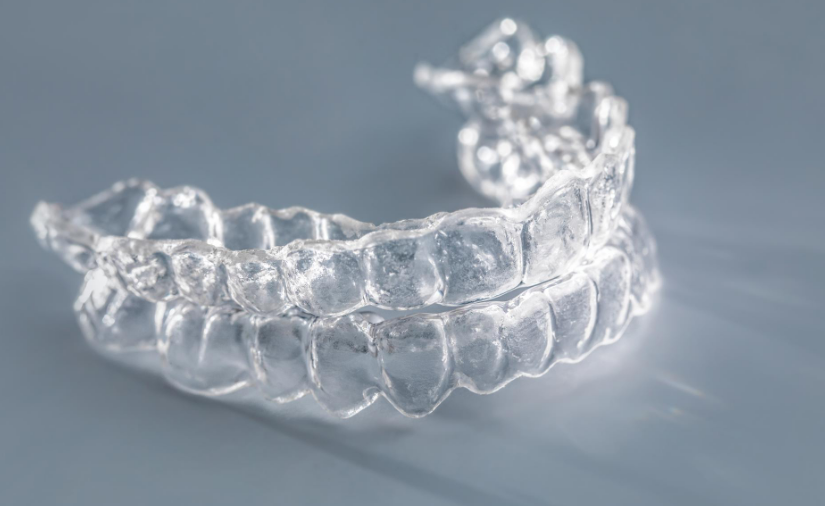


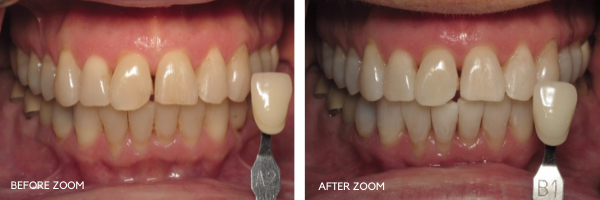
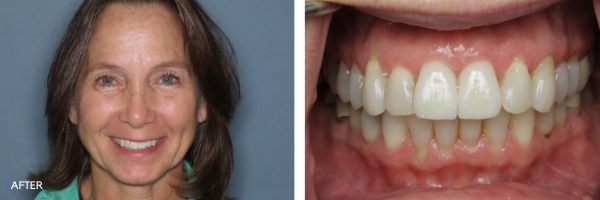


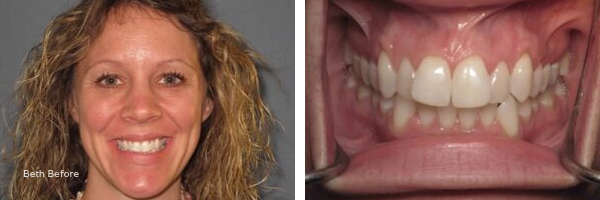
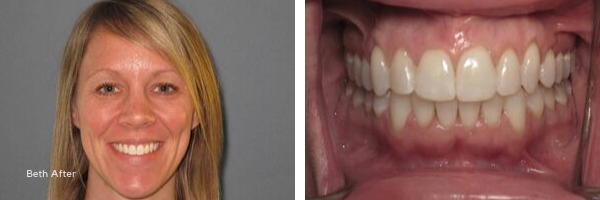
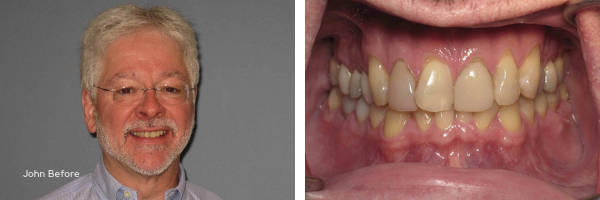
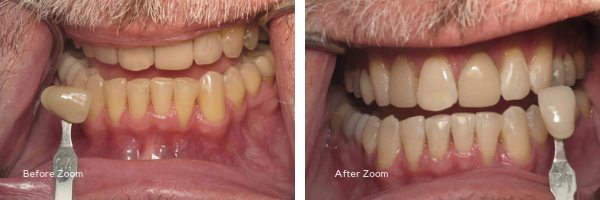
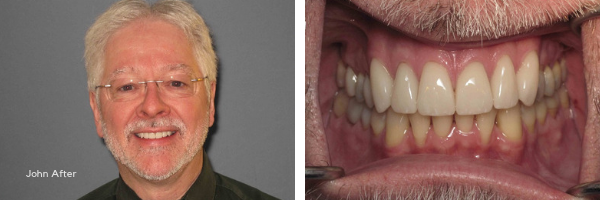

 Tooth Whitening: Over time, due to poor brushing habits and consumption of acidic and richly-hued foods and beverages, teeth become yellowed and dull. Tooth whitening is a safe and cost-effective procedure that brings back brilliance to your pearly whites. While historically triggering nerve sensitivity, today’s whitening agents contain fluoride and other desensitizing agents which reduce the risk of sensitivity. If properly maintained, the positive effects of tooth whitening can last for a number of years. It’s important to keep in mind that anything that can stain a white shirt can stain your smile. Ensuring thorough brushing after consumption of stain-inducing foods and beverages will extend the life of your tooth whitening procedure.
Tooth Whitening: Over time, due to poor brushing habits and consumption of acidic and richly-hued foods and beverages, teeth become yellowed and dull. Tooth whitening is a safe and cost-effective procedure that brings back brilliance to your pearly whites. While historically triggering nerve sensitivity, today’s whitening agents contain fluoride and other desensitizing agents which reduce the risk of sensitivity. If properly maintained, the positive effects of tooth whitening can last for a number of years. It’s important to keep in mind that anything that can stain a white shirt can stain your smile. Ensuring thorough brushing after consumption of stain-inducing foods and beverages will extend the life of your tooth whitening procedure.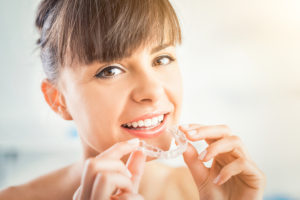 Invisalign®: As we’ve highlighted in recent posts, Invisalign® is a fantastic alternative to braces for many teens and adults. With the use of transparent, low-profile aligner trays, teeth can be straightened and improper bites corrected. This procedure is typically more comfortable, less visible and takes less time than teeth straightening and bite correction with traditional metal braces.
Invisalign®: As we’ve highlighted in recent posts, Invisalign® is a fantastic alternative to braces for many teens and adults. With the use of transparent, low-profile aligner trays, teeth can be straightened and improper bites corrected. This procedure is typically more comfortable, less visible and takes less time than teeth straightening and bite correction with traditional metal braces. In our previous post we introduced Invisalign® treatment as a great alternative to traditional braces. At Eggert Family Dentistry, we believe that thorough research is imperative to making your best decision. If you are considering Invisalign® there are some important questions you may want to ask prior to pursuing treatment.
In our previous post we introduced Invisalign® treatment as a great alternative to traditional braces. At Eggert Family Dentistry, we believe that thorough research is imperative to making your best decision. If you are considering Invisalign® there are some important questions you may want to ask prior to pursuing treatment.
 How do I know if Invisalign® is right for me?
How do I know if Invisalign® is right for me?

